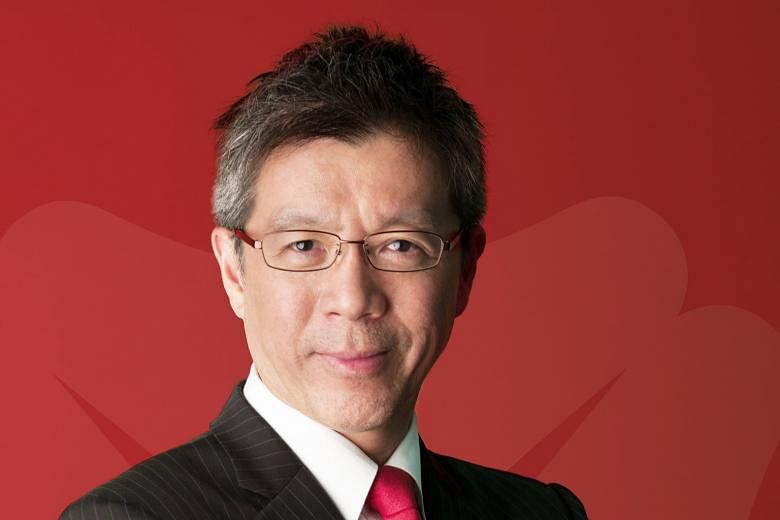The investing environment has been in good spirits so far this year, with global share markets hitting fresh highs.
Singapore's benchmark Straits Times Index (STI) is trending above the psychologically significant level of 3,000 points, making the local bourse one of the best-performing markets in the world this year.
This state of euphoria may have led investors to forget the spate of high-yield bond defaults that rocked the market last year, badly affecting investors in the process.
Local banks had their problems as well, with non-performing loans to the offshore and marine sector mounting up.
The Singdollar bond market has suffered five defaults since November 2015, representing $1.1 billion or 0.74 per cent of all bonds outstanding.
Before that, there had been no bond defaults here since 2009, but that changed with the string of collapses led by Trikomsel, then Pacific Andes Resources Development, Swiber, Perisai Petroleum Teknologi and Swissco. It goes to show that no investment, no matter how safe it may seem, is fail-safe.
-

Investors should ask if they are fairly paid for their risks in lending money to a firm, says CFA Singapore's Daryl Liew. - Bonds offer investors an opportunity to diversify their investments, says OCBC Bank's Vasu Menon.

- DBS Bank's Lim Say Boon says the bank will recommend the amount of bonds to buy, according to the client's risk appetite.

- The best approach for most individual investors is to invest in fixedincome mutual funds, says DBS' Lim Soon Chong.

The Sunday Times highlights some lessons on bond investments.
WHY INVEST IN BONDS?
When you invest in a bond, you are effectively lending money for a period to the issuer - be it the government or a corporate - that issued the bond. In return, bondholders receive a regular stream of interest income, or coupon, throughout the life of the bond.
The coupon payment is usually expressed as a percentage of the principal amount, also known as the face or par value. Upon maturity, bonds are redeemed at face or par value, so the bondholder gets his principal back.
Mr Daryl Liew, co-chair of the Advocacy Committee, CFA Singapore, warns that investors, particularly retail ones, tend to focus on the interest rate or yield of a bond.
"While the yield is important, investors should also consider whether they are being fairly compensated for the risks in lending to the company. In this regard, comparing the bond against a peer group of bonds issued by companies in the same sector with a similar credit profile would be useful.
"Other important factors to consider include the duration of the bond and whether there are any special features in the bonds, like call provisions," he advises.
For instance, bonds from the same issuer with longer tenures tend to provide higher coupon rates. This is to compensate investors for holding them longer as the chance of default rises over time.
Mr Vasu Menon, OCBC Bank's senior investment strategist, says bonds offer investors an opportunity to diversify their investments. They also earn a better yield - through the bond's coupon payouts - than bank deposit rates, which are close to record lows.
"For prudence, investors should always maintain a diversified portfolio with some representation of bonds in their portfolios. Bonds are generally more stable than equities and therefore help to inject stability into an investor's portfolio.
"Most bonds are also... less risky than equities, in that you get the face value of the bond back at maturity if the company does not go bankrupt or default on its obligations.
"In contrast, if the share price of a company falls sharply, it can take a long time before it recovers and, even after many years, it may not recover fully and investors could end up losing a significant part of their initial investments."
BOND PROPORTION
Financial experts say there is no one-size-fits-all formula, as it depends on the individual's asset-allocation strategy based on age, investment horizon, risk appetite, financial situation and investment goals.
Mr Lim Say Boon, DBS Bank's chief investment officer, says: "For our medium risk appetite/tolerance clients - balanced investors - we recommend 30 per cent in bonds, 54 per cent in stocks.
"But for our highest risk appetite/tolerance clients - aggressive investors - we recommend only 3 per cent in bonds, 89 per cent in equities.
"The lowest risk tolerance clients - defensive investors - will hold more cash than bonds, 65 per cent for cash/money market instruments versus 35 per cent for bonds, reflecting the credit and liquidity risks of bonds."
Mr Lim Soon Chong, regional head of investment products and advisory at DBS, notes that the Singdollar retail bond market is still too small to support the needs of all investors and the external ratings culture is also not well entrenched.
"For these reasons, we think the best approach for most individual investors - including affluent and individual retail investors here - is to invest in fixed-income collective investment schemes, for example, fixed-income mutual funds," he says. "These collective investment schemes tend to invest in a diversified pool of fixed-income securities and tend to offer better liquidity than individual bond investments."


